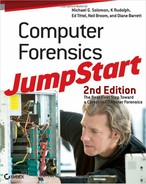Always use the KISS method. The old Keep It Simple, Stupid acronym reminds us that simple is better than complex. In fact, almost everyone will reject information that is confusing. If you want to be believed by the judge and jury, make your explanations simple. You’ll have to walk a fine line between keeping your explanations accessible and making them too simplistic.
Explaining Technical Concepts
Humans are associative thinkers. We take new information and associate it with information we already know. If we establish a strong enough association, we remember the new information. We can remember information in isolation, but only for a short time. Here’s a simple test to make my point:
1. What are Newton’s three laws of motion?
2. Write the quadratic formula from memory.
3. What are the Spanish (or French) words for cat, house, and bread?
4. Diagram the first sentence in the preceding paragraph.
At one time, you could probably answer all these questions. If you’re like most people, you could do it on the day of the test. But the memory tends to fade after a few days when the stored information is not frequently accessed. If you currently speak Spanish or French, the third question is a snap. The moral is: your audience will retain information longer if you help them associate it with something they already know. They will also understand it far better. Try to explain technical concepts using analogies where appropriate.
Let’s assume you are asked to explain how a firewall works. You can start with something like: “A firewall is like a toll plaza. All traffic must pass through a toll booth in the plaza. Traffic is sorted by payment method: fast pass, exact change, and change provided.” This starts off with a mental picture your audience can build on. Take time to develop analogies to explain technical concepts. They can go a long way to get a nontechnical audience to understand technical concepts.
Use Presentation Aids When Needed
In addition to helping your audience use mental pictures, bring some pictures of your own. The old adage “A picture is worth a thousand words” is absolutely true. When appropriate, use various presentation aids to clarify your point. However, don’t use presentation aids just to look impressive. Whether you use old-fashioned overhead projectors and cellophane slides, or PowerPoint presentations delivered with computer and projectors, the goal of any presentation is to get your point across to the jury and ensure that they understand the message. The presentation method might vary depending on the evidence—use the method that is most effective for delivering the message you want the jury to understand. Regardless of the delivery media used, ensure that you are completely comfortable with the media and understand how to operate any equipment (such as a computer or projector) so that the delivery is seamless and polished before the court.
If you believe a picture will help your audience understand or remember something, use it. In many cases, projecting a picture onto a screen while you explain a topic helps to cement that topic in the minds of the audience. Pictures are only one of many presentation aids available. When they help your testimony, use any of the following:
- Pictures (including crime scene photos)
- Illustrations
- Animation
- Charts or diagrams
The preceding list is not exhaustive. Use the presentation aid you think will make the most impact. That impact is measured in how well your audience understands the points you are making, not in how impressive your presentation looks.
Watch for Feedback
One of the most crucial factors during testimony is audience feedback. Because you make eye contact with the judge and jury, you can see how they react to you. Read their facial expressions and body language. You can tell when you are boring someone. Too few witnesses care, though. When you are presenting any type of information, watch to see what your audience is “saying” to you.
Anytime you lose your audience, do something. If you see that you are losing the jury as you explain how firewalls work, ask for a break. Talk the problem over with your legal team. They may suggest you try a different approach. You may have no other alternative but to push on through. Regardless, try to react to your audience. You might not be able to make the technical exciting, but you can try. Simply responding to the facial expressions and body language of your audience can increase their trust in you.
